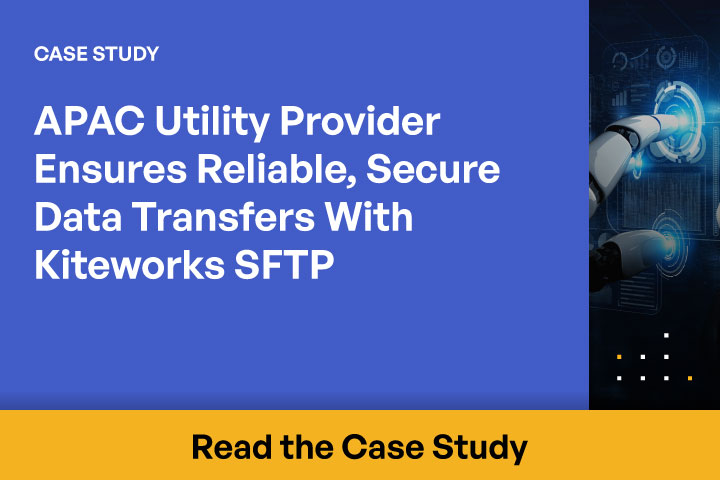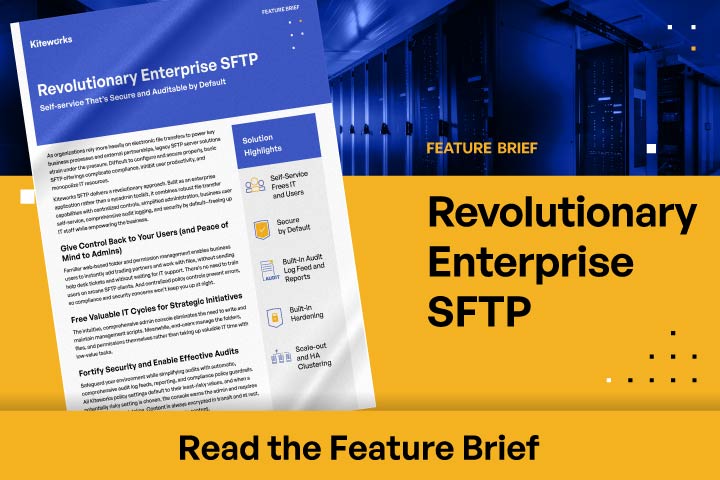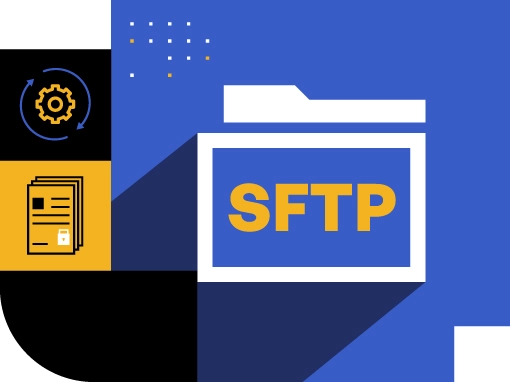
Centralize and Simplify SFTP Server Management
Managing a legacy SFTP server can be pretty complex; you need to manage user access, handle large volumes of data, ensure data security and privacy, provide high availability and uptime, and deal with the technical aspects of the SFTP protocol. Throw in troubleshooting issues and maintaining compliance with regulatory standards and you’ve really got your hands full. Kiteworks SFTP takes all this pain away. It runs a hardened virtual appliance so you can consolidate and centralize security, governance, and management. Scale with distributed cluster and high availability options. Delegate folder management but control user access, expiration, domain whitelist/blacklist, and other policies. Securely store a 90-day or longer archive of transfer data, or set a shorter expiration date based on your policies. Leverage audit logs and reporting capabilities for transparency, traceability, and real-time feed to your SIEM. You can even move SFTP and SSH to separate ports, eliminating the constant, malicious SSH login attempts suffered when keeping a shared port 22 open for SFTP.
Speed Responsiveness With Governed Self-service
Traditional SFTP user management can be demanding, requiring manual creation, deletion, and modification of user accounts. You also need significant technical knowledge, as legacy SFTP involves handling software upgrades, patches, backups, and maintaining high availability. And security is always a concern, including encryption, user access control, and keeping the server secure from potential threats. Kiteworks SFTP is all about self-service. Designated users create SFTP server folders and manage their own external users; no need to add them to LDAP or AD. They can upload and download files using a simple web sharing interface and can also securely share data to and from SharePoint and Windows networks file shares. But don’t worry, admins can still control who manages SFTP server folders and external users and can monitor and override business users.

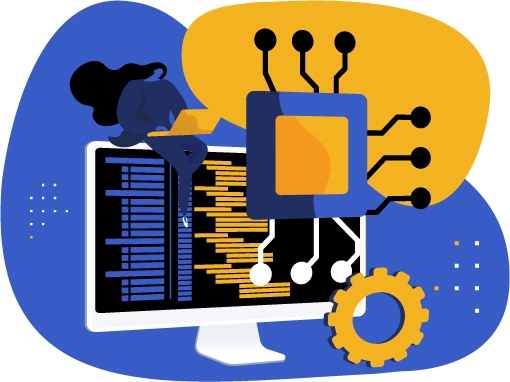
Continue Using Your Existing SFTP Server Scripts
Change is typically hard. Organizations are often hesitant to migrate to a new SFTP solution due to the potential disruption of operations. Deploying SFTP solutions can require rewriting server scripts, retraining staff, and adjusting to a new system, leading to downtime and reduced productivity. There’s also the very real risk of data loss or security vulnerabilities during the transition. With Kiteworks SFTP, you can continue using the scripts you use today because they’re compatible. With no rewriting required, you minimize disruption and risk. And you don’t have to worry about retraining external users; they won’t need it. You choose between requiring certificate-based or password-based authentication.
Simplify and Automate SFTP With Secure Managed File Transfer
One of the big knocks against SFTP is it doesn’t inherently offer automation capabilities. You can’t schedule transfers or set up automated workflows unless you write and maintain complex custom scripts. Or you must manually initiate and monitor every file transfer, upload, or download, which can be inconvenient, inefficient, and lead to errors. Kiteworks Managed File Transfer (MFT) addresses these shortcomings. Kiteworks MFT provides robust automation, providing organizations with reliable, scalable operations management, featuring simple, code-free forms and visual editing. Kiteworks handles all the logging, governance, and security requirements with centralized policy administration while a hardened virtual appliance protects data and metadata from malicious insiders and advanced persistent threats.

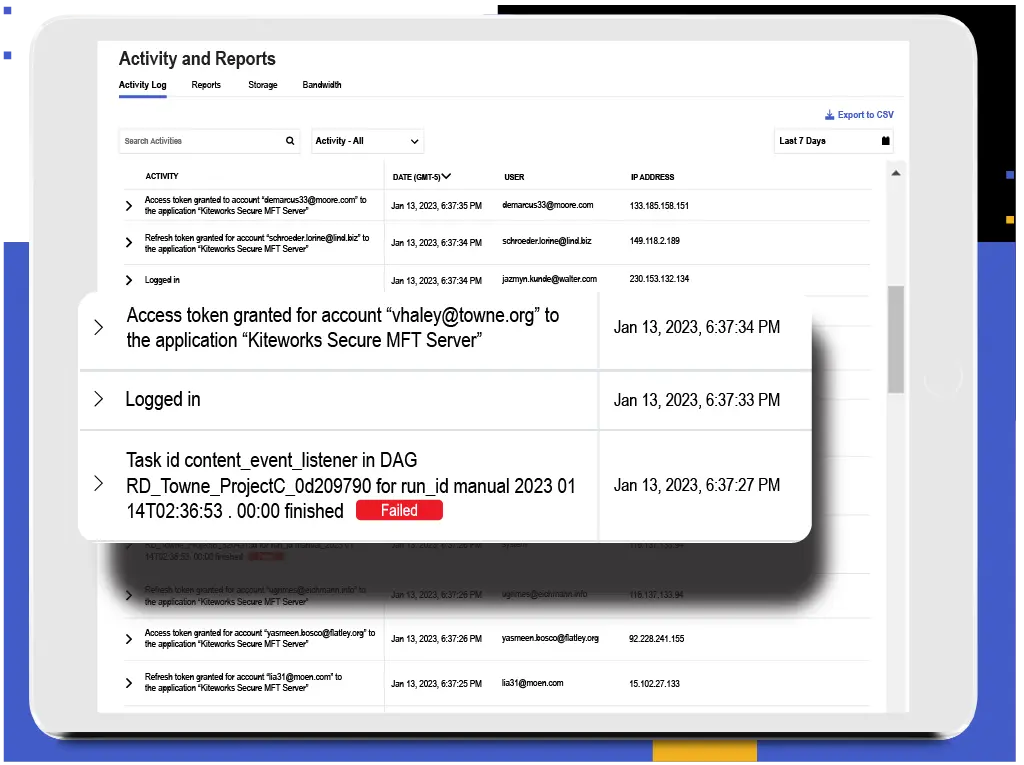
Demonstrate Compliance With Out-of-the-Box Logging and Reporting Capabilities
A robust SFTP solution, both client and server, should enhance, not inhibit, your regulatory compliance efforts. It should ensure secure and encrypted transfer of files containing personally identifiable information and protected health information (PII/PHI). It should also provide robust authentication, ensure data integrity, and allow for detailed activity logging. Kiteworks SFTP helps organizations demonstrate compliance with CMMC, HIPAA, GDPR, NIS 2, and many more. All folder, file, and SFTP server and client activities are logged, even repeated failed login attempts. Feed these comprehensive logs in real time to your SIEM via syslog for threat detection, incident response, and compliance. Automatic reports and dashboard for admins, executives, and auditors.
LEARN MORE ABOUT KITEWORKS FILE TRACKING AND LOGGING CAPABILITIES
Häufig gestellte Fragen
SFTP steht für Secure File Transfer Protocol. Es ist ein Netzwerkprotokoll, das für die sichere Übertragung von Dateien über eine Secure Shell (SSH)-Verbindung verwendet wird. SFTP bietet eine sichere Methode zum Übertragen von Dateien zwischen Systemen und gewährleistet die Vertraulichkeit und Integrität der Daten.
SFTP und File Transfer Protocol (FTP) dienen beide dem Zweck der Dateiübertragung, unterscheiden sich jedoch in Bezug auf Sicherheit und Datenübertragung. SFTP verwendet beispielsweise SSH für die sichere Dateiübertragung und verschlüsselt die Daten während der Übertragung, während FTP standardmäßig keine Verschlüsselung bietet. FTP Secure (FTPS) ist eine weitere Option, die SSL/TLS-Verschlüsselung zu FTP hinzufügt.
Ja, SFTP wird allgemein als sicher angesehen. Es nutzt Verschlüsselung und Authentifizierungsmechanismen, die von SSH bereitgestellt werden, um die Vertraulichkeit und Integrität der übertragenen Dateien zu schützen. Die Daten werden während der Übertragung verschlüsselt, um unbefugten Zugriff oder Abhören zu verhindern.
SFTP selbst ist ein Secure File Transfer Protocol und adressiert nicht von sich aus die Einhaltung spezifischer Vorschriften wie der Datenschutzgrundverordnung (DSGVO). Die Einhaltung der DSGVO hängt von verschiedenen Faktoren ab, einschließlich der Implementierung und Nutzung von SFTP innerhalb eines Unternehmens. Um die Compliance sicherzustellen, müssen Unternehmen zusätzliche Maßnahmen wie geeignete Zugriffskontrollen, Datenverschlüsselung und den ordnungsgemäßen Umgang mit personenbezogenen Daten in Betracht ziehen.
Das Cybersecurity Maturity Model Certification (CMMC) ist ein Rahmenwerk zur Bewertung der Cybersecurity-Fähigkeiten von Verteidigungsauftragnehmern. SFTP kann Teil der Sicherheitsmaßnahmen sein, die implementiert werden, um bestimmte Anforderungen des CMMC zu erfüllen, insbesondere im Hinblick auf die sichere Übertragung von Dateien. CMMC-Compliance umfasst jedoch ein breiteres Spektrum an Cybersecurity-Praktiken über Dateiübertragungsprotokolle hinaus, wie Netzwerksicherheit, Zugriffskontrollen und Incident Response. Unternehmen müssen alle notwendigen Maßnahmen umsetzen, um die Compliance mit dem spezifisch erforderlichen CMMC-Level zu erreichen.
FEATURED RESOURCES
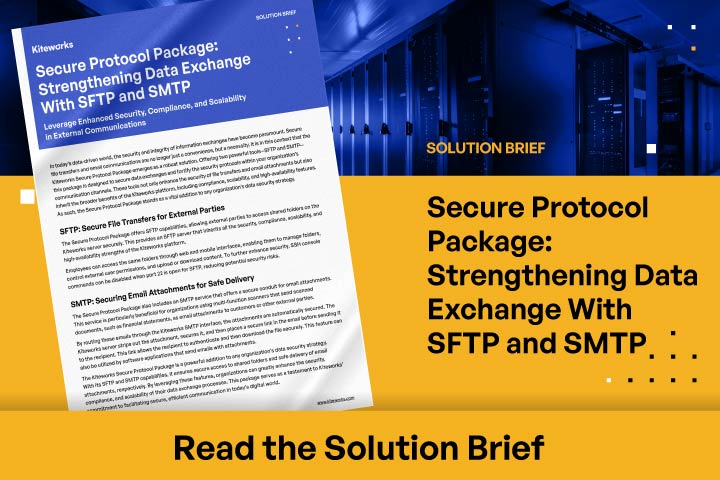
Secure Protocol Package: Strengthening Data Exchange With SFTP and SMTP
